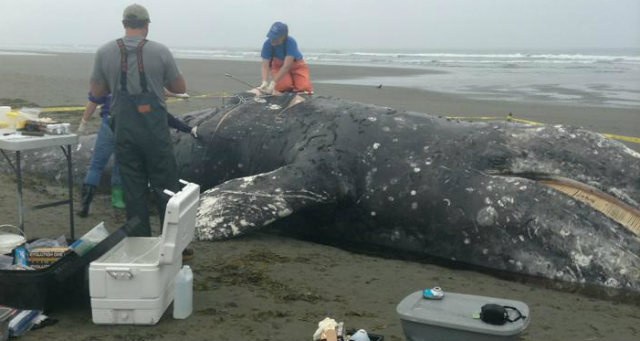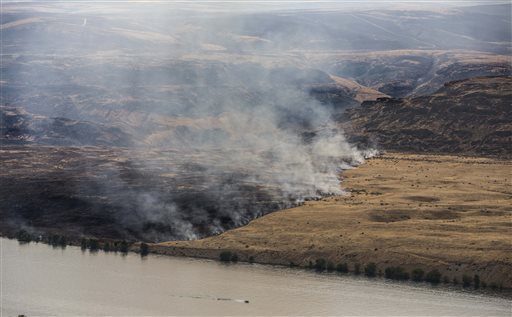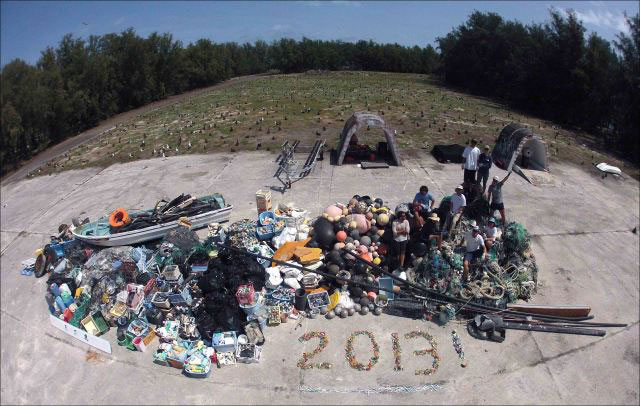Mary Annette Pember, Indian Country Today Media Network
The Iron County Board voted on July 30 to postpone action against the Penokee Hills Education Camp, referring the issue back to the Forestry Committee with instructions to work with county and LCO tribal attorneys to find a legal way to allow the camp to remain in the forest.
About 50 people gathered at the Penokee Harvest Camp immediately before the meeting for a flag raising ceremony and tobacco offering by Bad River tribal elder Joe Rose. Lac Courte Oreilles vice chairman Rusty Barber was on hand to personally raise the LCO flag and underscore the cultural and environmental significance of the Camp. “We want to tell our future generations how to use mother earth in the right way,” he said.
More than 100 people showed up at the Iron County courthouse Tuesday night in support of the camp, many carrying signs supporting the Harvest Camp and treaty rights.
The tiny county board meeting room was filled to capacity forcing many people to wait outside and in the hallway. Several people spoke during the public comment period before board members voted, most in opposition to the mine.
Several people giving public comments were overcome with tears as they spoke of the injustice of putting an open pit mine in the Penokees. Others described how the Harvest Camp had turned around their perceptions of Native people who are often scape goated by the mainstream community as opponents to progress and jobs. Aileen Potter of Montreal, a few miles from the proposed mine described how she was taught to fear Native people as a child. “My dad used to tell us to duck down in the car when we drove through the Bad River reservation,” she recalls.
Originally a mine supporter as a way to generate jobs in the community, she has since changed her opinion after learning more about the potential impact on the water and environment. Recently she worked up the courage to visit the Harvest Camp.
“It was scary for me to go out there. I was nervous but Mel (Mel Gaspar, camp leader) greeted me at the entrance and asked if I had come to learn about what was going on there,” she said.
Gaspar gave her a tour of the camp and described the work being done to identify plant species, teach people about traditional Ojibwe gathering methods and determine the potential impact of the mine on the area.
Potter has been trying to educate other people in her community about the dangers presented by the mine but opines that although many not support it, they are afraid to speak out against it. “They may be afraid of being penalized at work or becoming targets in the community, “ she speculated.
The boardroom debate became heated when board member James Lambert complained that the camp was not about treaty rights but was in fact a protest against the mine. “I don’t consider this to be a treaty rights issue at all,” he interjected during the public hearing portion of the meeting.
Although the board charged the Forestry committee to work out a way for the camp to remain in the forest, it is unclear if such an arrangement is possible under current Wisconsin state statutes. Corporation counsel for the Iron County board Michael Pope expressed concern about ensuring that any agreements between the county and LCO tribe met with the Wisconsin Department of Natural Resources approval. If the county does not conform to DNR statues, it runs the risk of losing financial support and grant monies administrated by the DNR.
Paul DeMain, spokesperson for the Harvest Camp was pleased with the county’s action and hopeful that the attorneys can arrive at a decision that both sides can agree on.
“This decision gets the issue back where it needs to be in order to find a middle ground,” he observed.
Joseph Pinardi, Iron County board chairman was clearly eager to get Iron County out of the national spotlight and return to “business as usual” as he described the work for the normally sparsely attended meetings in this small county.
He told a reporter that the controversy surrounding the Harvest Camp was “seriously blown out of proportion.”
The camp has become a political lightning rod and will continue to draw fire from both sides.
In June Wisconsin Rep. Mark Honadel (R-South Milwaukee) rallied fellow Republicans to introduce a bill into the state budget that would restrict public access to mining sites under the auspices of concern for public safety. He told the Milwaukee Journal Sentinel that public access is already restricted from areas where mining is going on. “It just makes common sense,” he said.
The bill didn’t pass however because it was “too rushed” according to Honadel. He told the Daily Reporter, however, that the state assembly should act quickly to introduce a separate bill that restricts public access.
After visiting the Harvest Camp in July, however, state Senators Bob Jauch (D-Poplar) Dale Schultz (R-Richland Center) and Tim Cullen (D-Janesville) announced that they will introduce legislation to address workplace safety and ensure public access to open managed forest land. The proposed Gogebic Taconite (GTAC) mine is located on such land.
Public access and public gatherings have been a sore spot for the Gov. Scott Walker administration. Harkening back to the 1960’s Vietnam protests, groups have gathered in the capital rotunda daily to sing protest songs. The Solidarity Sing Alongs held at the capitol building in Madison protesting the Walker administration since 2011 have grown in size. In response, Walkers administration revised the buildings public access policy, requiring groups to get permits for organized activities. Last week, over a three-day period, police arrested nearly 100 people for singing in the capital rotunda including a mother who was led away in handcuffs as her young daughter stood by. Protesters were issued citations in the amount of $200.00.
The Walker administration described the sing-alongs as disruptive and claimed that the gatherings discouraged others from visiting the building. Protesters, however, maintain that it is their constitutional right to gather and petition their government. Earlier in July, a federal judge upheld Walkers change in access policy.
On July 30, Walker supporters occupied the capital rotunda leaving protesters to gather on the lawn outside the building. The Wisconsin State Journal described the gatherings as “dueling protests.”
Several opponents to the GTAC mine have also participated in the sing-alongs including Rebecca Kemble of The Progressive Magazine whose parents were arrested for their participation last week. Tom and Joan Kemble are 85 and 80 years old.
As for the Harvest Camp, it’s time to “hunker down” according to DeMain. Camp organizers will continue with their work of educating the public about the cultural and environment significance of the Penokee Hills and hope to expand to create a public market for Native artists. “If we build it, they will come,” DeMain said.
RELATED: Wisconsin Mining War
Read more at https://indiancountrytodaymedianetwork.com/2013/08/01/fate-harvest-camp-postponed-considered-political-lightning-rod-150677



 July 24, 2013
July 24, 2013 













